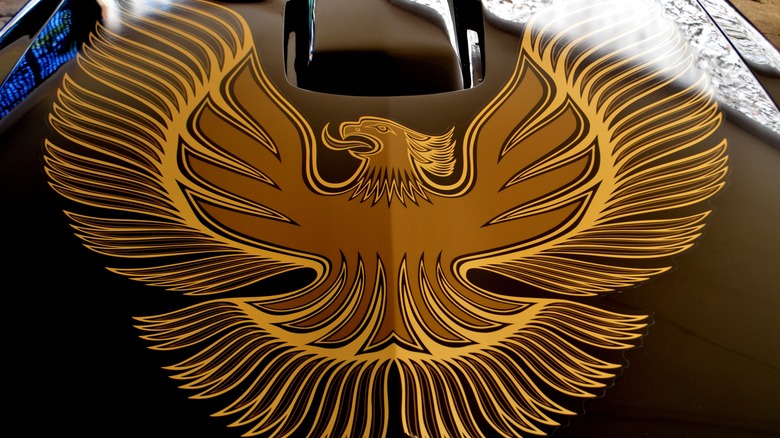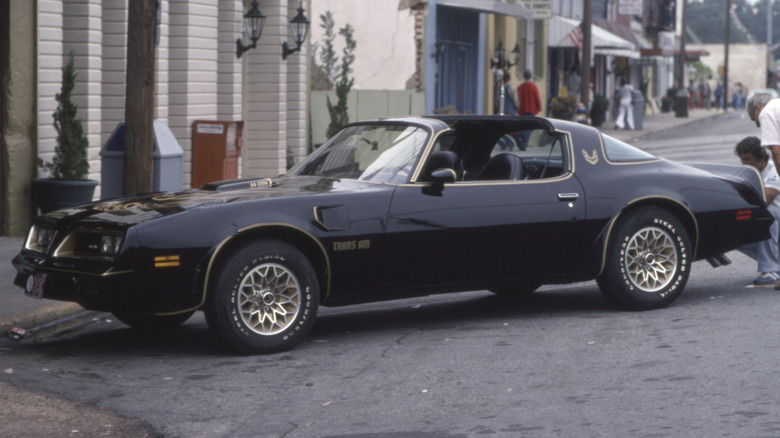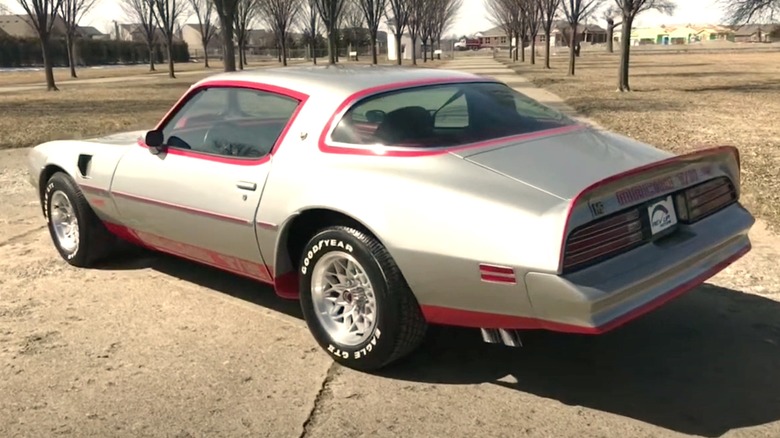Pontiac Trans Am Vs Macho T/A: What's The Difference?
For a generation of automobile enthusiasts, the Pontiac Trans Am remains one of the A-list vehicles of America's muscle car era. It's not hard to see why, as stock Trans Ams hit the market with some serious power under the hood, allowing them to more than hold their own against virtually all comers on the road. During its early years of production, the Trans Am not only became a hit with muscle car enthusiasts but a staple of the silver screen as well, making memorable appearances in hit films like John Wayne's "McQ," the Clint Eastwood and Jeff Bridges starring "Thunderbolt and Lightfoot," and, of course, the Burt Reynolds classic "Smokey and the Bandit." which turned it into the iconic movie car it was.
The power of the early Trans Ams was legendary in its own time. Even still, Pontiac's big-inch engine beast got a significant power boost in 1977 when the Macho T/A models first began hitting the streets. Given that both models are Trans Ams, it can be a challenge to discern the differences between a Macho T/A and a stock Trans Am. So we took a look under the hood and at the undercarriage of each to help you sort out the differences. Here's what we found.
What is a Pontiac Trans Am?
We'll begin our breakdown with the Pontiac Trans Am because that vehicle ultimately beget the Macho T/A. Ironically, Trans Am enthusiasts can tell you the original T/A is not a wholly original creation itself and is, in fact, a slightly modified version of the Pontiac Firebird. The automaker's Firebird debuted in 1967 and could be outfitted with a 3.8 L6 engine that delivered 220 horsepower. The first Trans Am arrived two years later with a surname inspired by the beloved Trans-American Cup road-racing series and boasting a 400-cid V-8 engine with a brake horsepower of 335.
Despite its power, the first-generation Trans Am struggled to find favor outside the muscle-car-loving public. The big engine beauty also didn't yet front the classic Trans Am look enthusiasts would come to adore in the 2nd Generation model. Those 2nd Gen T/As arrived in 1970, and even if their 4.9-liter V8 engines brought the vehicle's horsepower down to a sub-muscle 210, the body design became almost instantly iconic, as did the deliciously gaudy "Screaming Chicken" decal Pontiac began offering as a hood adornment in 1973.
A year later, Pontiac also began fitting Trans Ams with their fabled Super Duty 455 engine, a muscle car era all-star if there ever was one. Unfortunately, federal regulations meant Pontiac could not continue to use the gas-guzzling 455, with some naming the '74 Trans Am the last of the American muscle cars.
What is Pontiac's Macho Trans Am?
Yes, the Macho T/A more than lived up to the hype, besting the stock version Trans Ams almost across the board with upgrades in power, suspension, wheels, and an even greater affinity for sick decals. Those upgrades were bestowed upon the Trans Am in 1977, though Pontiac didn't have much to do with them. In fact, the Macho T/A was more the brainchild of ambitious Arizona auto dealers Dennis and Kyle Mechum, who took it upon themselves to tinker with stock model Trans Ams and turn them into the muscle car beasts it was meant to be.
As for what drove the Mechums to undertake their Macho T/A madness, they were largely disappointed with the lack of power in stock 1977 Trans Am engines, which Pontiac installed to abide by federal laws spawned from the '70s energy crisis. Their fix was to give an after-market overhaul to stock Trans Ams, using classic hot rod tricks to boost the engine's power. However, those tricks meant the vehicles weren't in line with federal new car regulations, a fact the Mechums reportedly got around by selling an overhauled Macho T/A as a used vehicle.
The only major drawback with the Mechum's "Macho" conversion is that it added to the finished vehicle's price by more than $3000 with a turbocharge addition running another $3000. All in, a fully tricked-out Macho T/A could cost as much as $13,000, which put it on par with many luxury cars of the day. Nonetheless, the Mechums continued tricking out Trans Ams "Macho" style until 1980, when Pontiac fit T/As with a small-block engine they deemed too small to work with.


